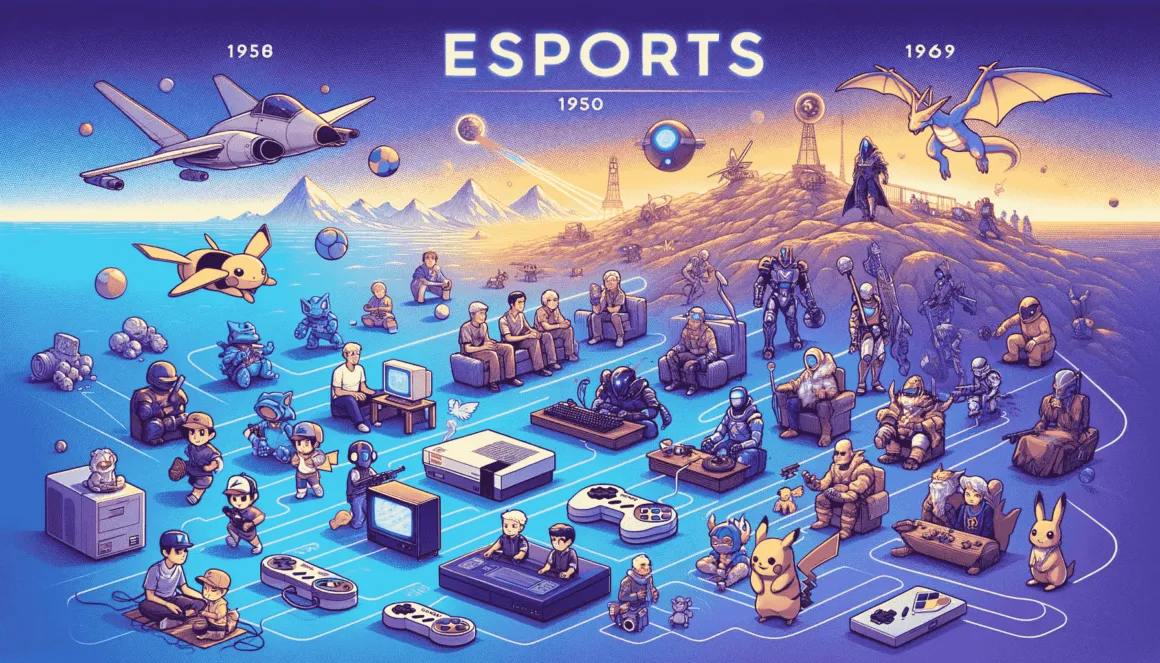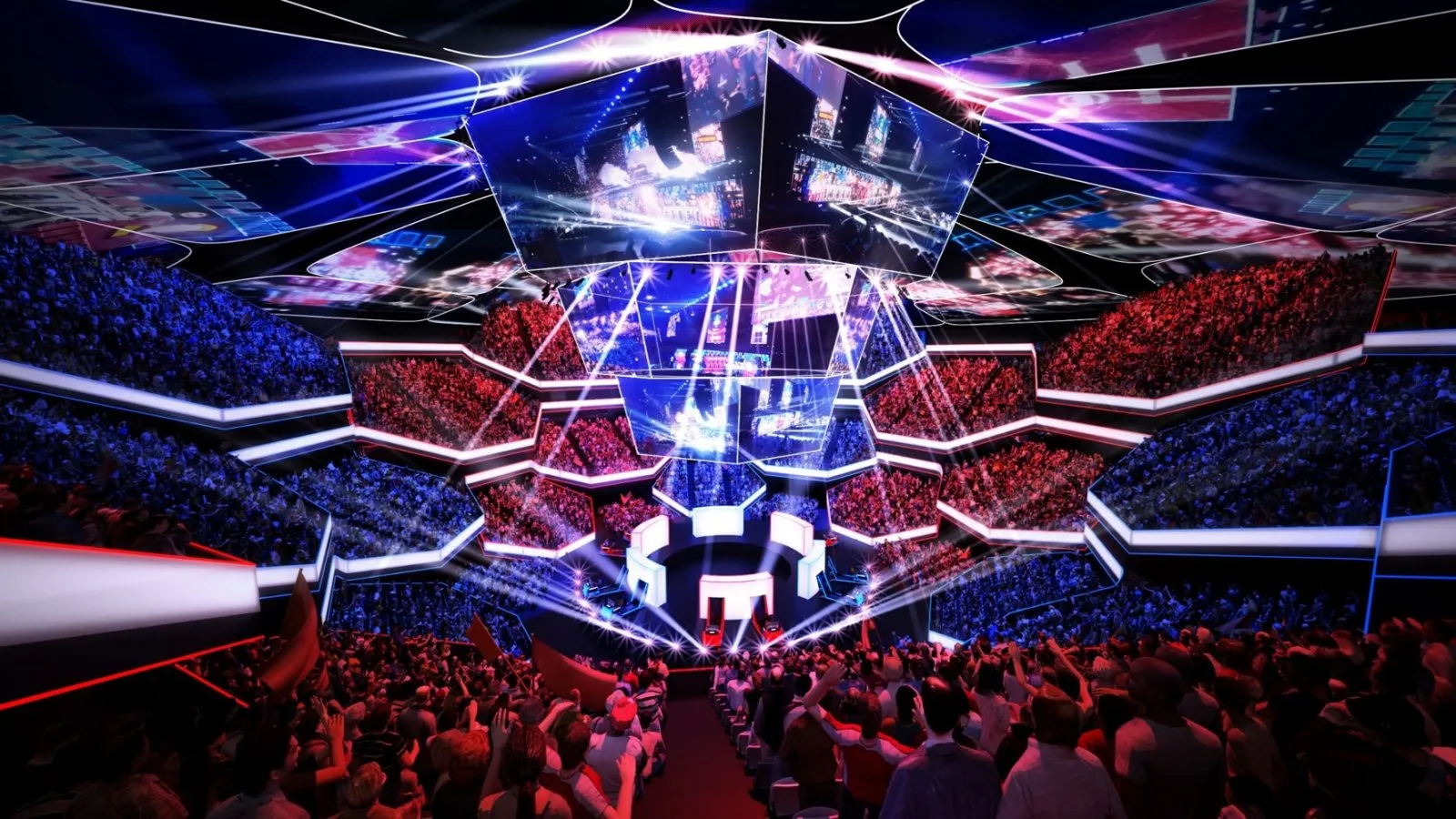The History of Esports From Humble Beginnings to Global Phenomenon
Esports, or electronic sports, has taken the world by storm in recent years. What started as a niche hobby for some has now evolved into a multi-billion dollar industry with a global reach. Professional gamers are now respected and celebrated athletes, and big companies are investing heavily in esports events and teams.
But how did this all start? What were the key moments and developments that led to the rise of esports? In this article, we will dive deep into the history of esports, exploring its origins, major milestones, and significant players that helped shape it into what it is today.

1. Early Beginnings of Competitive Gaming (800-1000 words)
The First Video Game Tournaments
The first recorded video game tournament can be traced back to Stanford University in 1972. The event featured players competing in the game “Spacewar!” on the university’s PDP-10 mainframe computer. The grand prize was a subscription to Rolling Stone magazine, making it more of a casual competition rather than a serious sporting event.
However, it wasn’t until the late 1970s and early 1980s that video game tournaments started gaining more popularity. In 1978, Atari held their Space Invaders Championship, which attracted over 10,000 participants and was broadcasted on national television.
Then in 1980, Twin Galaxies, an organization dedicated to keeping track of high scores in video games, started organizing their own tournaments. The most notable one was the Life Magazine’s National Video Game Championships, which had a cash prize of $10,000 and received coverage from major media outlets like CBS News and the New York Times.
The Rise of Arcade Gaming
In the 1980s, arcade gaming became a massive trend, with gaming arcades popping up all over the world. This trend also gave rise to competitive arcade gaming, with players competing for the highest scores and bragging rights.
One of the most famous arcade games was “Donkey Kong,” which was released in 1981. It became a cultural phenomenon, and its competitive scene was documented in the 2007 documentary “The King of Kong: A Fistful of Quarters.”
Another popular competitive arcade game was “Street Fighter II,” released in 1991. It spawned a global competitive scene and is considered one of the pioneers of modern-day esports.
The Emergence of LAN Parties
With the rise of home computing in the 1990s, gamers started organizing LAN parties, where they would connect their computers together to play multiplayer games. These events were mainly for fun, but they also sparked the idea of competitive gaming at a local level.
In 1997, the first official LAN tournament, Red Annihilation, was held for the game “Quake.” It featured a $10,000 cash prize and attracted over 2,000 participants. The success of this event prompted game developers to start hosting their own tournaments, such as the “Unreal Tournament” World Championship in 1999.
2. The Birth of Esports Organizations (800-1000 words)
CPL and WCG
In 1997, Angel Munoz founded the Cyberathlete Professional League (CPL), which was the first professional gaming league. The CPL’s inaugural event, the Frag 3D Invitational, had a prize pool of $15,000 and featured well-known esports titles like “Quake II” and “StarCraft.” It quickly gained popularity and became one of the most prominent esports organizations in the 2000s.
The World Cyber Games (WCG) was another significant organization that emerged during this time. Founded in 2000, it aimed to give recognition to professional gamers by holding annual global tournaments. The WCG attracted players from around the world, with past winners including notable names like Lee “Faker” Sang-hyeok and Jonathan “Fatal1ty” Wendel.
Multiplayer Online Battle Arenas (MOBAs)
The early 2000s saw the rise of a new genre of video games: MOBAs. These games featured teams of players battling each other in an arena, and they quickly became popular among gamers. The first major MOBA title was “Defense of the Ancients” (DotA), a custom game created for “Warcraft III: Reign of Chaos.”
In 2009, Riot Games released “League of Legends,” which became one of the most successful esports titles of all time. Its popularity led to the creation of the League of Legends Championship Series (LCS) in 2013, a professional league that attracts millions of viewers worldwide.
Another popular MOBA is “Dota 2,” a standalone sequel to DotA. It was developed by Valve Corporation and has since become a mainstay in the esports scene, with its own annual tournament, The International, featuring multi-million dollar prize pools.
The Emergence of Twitch
In 2011, Justin Kan and Emmett Shear launched Twitch, a live streaming platform primarily focused on gaming content. It quickly gained popularity, and by 2014, it was acquired by Amazon for nearly $1 billion.
Twitch revolutionized the way esports events were viewed, allowing fans to watch tournaments in real-time from the comfort of their own homes. This led to a significant increase in viewership and helped propel esports into mainstream media.
3. Mainstream Recognition and Growth (800-1000 words)
Olympics Consideration
In 2017, competitive gaming reached new heights when the International Olympic Committee (IOC) recognized esports as a potential future Olympic event. This decision sparked debates on whether esports should be considered a legitimate sport, as well as discussions on how it could fit into the Olympic program.
While there are still challenges to overcome before we see esports in the Olympics, this recognition from the IOC was a significant step towards mainstream acceptance of competitive gaming as a legitimate sporting event.
Sponsorship and Brand Partnerships
As esports continued to gain popularity, companies started recognizing its potential for marketing and advertising. Brands like Red Bull, Coca-Cola, and Intel have become major sponsors of esports events, investing millions of dollars in partnerships with teams and leagues.
This influx of sponsorship money has allowed teams and players to compete at a higher level and has contributed to the overall growth of the industry. In addition, these partnerships have also helped legitimize esports in the eyes of the public and traditional sports organizations.
Esports Organizations and Professional Players
As more companies and brands started investing in esports, organizations dedicated to managing and representing professional gamers began to emerge. These organizations provide players with financial support, training facilities, and access to resources that enable them to compete at the highest level.
Some notable organizations include SK Telecom T1, Cloud9, and Fnatic, which have teams competing in various games such as “League of Legends,” “Counter-Strike: Global Offensive,” and “Dota 2.”
In addition to organizations, individual professional players have also become household names in the esports scene. Some of the most successful and well-known players include Lee “Faker” Sang-hyeok, Johan “N0tail” Sundstein, and Kuro “KuroKy” Takhasomi.
4. Esports Goes Global (800-1000 words)

International Tournaments and Leagues
As esports grew in popularity, an increasing number of international tournaments and leagues were established. The most prominent is the League of Legends World Championship, which attracts millions of viewers worldwide and has a prize pool of over $6 million.
Other notable events include the Dota 2 International, The Overwatch League, and the Fortnite World Cup. These events not only provide players with the opportunity to compete on a global stage but also showcase the immense growth and potential of esports as an industry.
Esports in Asia
While esports has gained popularity globally, it has had a particularly significant impact in Asia. South Korea, in particular, is considered the birthplace of esports, with a thriving competitive gaming scene since the early 2000s.
South Koreans are known for their dominance in games like “StarCraft” and “League of Legends,” with many professional gamers hailing from the country. In addition, South Korea hosts many major esports events, including the League of Legends Champions Korea (LCK) and the KeSPA Cup.
China is another country where esports has become a cultural phenomenon. With a population of over 1.4 billion people, China has a massive audience for esports events and is home to some of the world’s top teams and players.
Esports in Europe and North America
Europe and North America are also significant regions in the esports world. Countries like Sweden, Denmark, and Finland have established themselves as powerhouse nations in games like Counter-Strike and Dota 2.
In North America, the United States is home to some of the biggest and most successful esports organizations, such as Team Liquid and Evil Geniuses. The United States also hosts several major esports events, including the League of Legends Championship Series (LCS) and the Call of Duty World League (CWL).
5. The Impact of Technology and Innovation (800-1000 words)
Streaming Platforms
The rise of live streaming platforms like Twitch and YouTube Gaming has played a considerable role in the growth of esports. These platforms have made it possible for fans to watch tournaments and games in real-time from anywhere in the world.
Streaming has also allowed professional gamers to connect with fans on a more personal level, as many players have their own channels where they share tips, tricks, and behind-the-scenes footage.
Virtual and Augmented Reality
The emergence of virtual and augmented reality technology has opened up new opportunities for esports. Games like “Beat Saber,” “Echo Arena,” and “Onward” have gained popularity as competitive VR titles, with players competing in virtual environments using specialized equipment.
Augmented reality has also been utilized in esports events, such as the 2020 League of Legends World Championship, where a virtual AR dragon flew over Shanghai’s city skyline during the opening ceremony.
Enhanced Broadcasting
Broadcasting technology has also played a significant role in the growth of esports. With advanced graphics, camera angles, and commentary, esports events are now visually appealing and engaging, making it easier for non-gamers to follow along.
In addition, broadcasting technology has made it possible to analyze games in real-time, providing viewers with insights into strategies and player performance. This has also helped legitimize esports in the eyes of traditional sports fans, who may be unfamiliar with competitive gaming.
6. The Future of Esports (800-1000 words)

Continued Growth and Mainstream Recognition
The future of esports looks incredibly bright. Market research firm Newzoo predicts that by 2021, the global esports market will reach $1.8 billion in revenue, with North America and Asia leading the way.
With this continued growth, it is no surprise that esports is gaining more recognition from mainstream media. In recent years, major television networks like ESPN and Turner Broadcasting System have aired esports events, bringing the industry to an even broader audience.
Esports Olympiad and Increased Prize Pools
As mentioned earlier, there have been discussions about including esports in the Olympics, with some events already holding “esports demonstrations.” The esports industry is also pushing for recognition from the International Olympic Committee, with hopes of having an “Esports Olympiad” in the future.
In addition to potential Olympic inclusion, we can expect to see an increase in prize pools for major esports events. With companies and brands investing more money into the industry, it’s not uncommon for tournaments to have multimillion-dollar prize pools, with some reaching up to $30 million.
New Technologies and Innovations
As technology continues to evolve, we can expect to see more innovations and advancements in the esports industry. Virtual and augmented reality will likely become even more integrated, creating new opportunities for competitive gaming.
The rise of 5G technology will also have a significant impact on esports, as faster internet speeds will allow for smoother gameplay and better streaming quality. This could also lead to the development of new types of games that are more suited to online competitive play.
Conclusion (300-400 words)
In conclusion, the history of esports has been a fascinating journey, from humble beginnings to becoming a global phenomenon. What started as casual competitions and LAN parties has now evolved into a multi-billion dollar industry, with millions of fans tuning in to watch their favorite players and teams compete.
The growth of technology and innovations have played a significant role in shaping esports into what it is today. Streaming platforms, virtual and augmented reality, and enhanced broadcasting have all contributed to making esports more accessible and engaging for both players and viewers.
With continued growth and mainstream recognition, the future of esports looks brighter than ever. We can expect to see increased prize pools, new technologies and innovations, and even potential inclusion in the Olympics in the years to come. Esports has truly cemented itself as a legitimate sport, and it will be exciting to see where it goes from here.